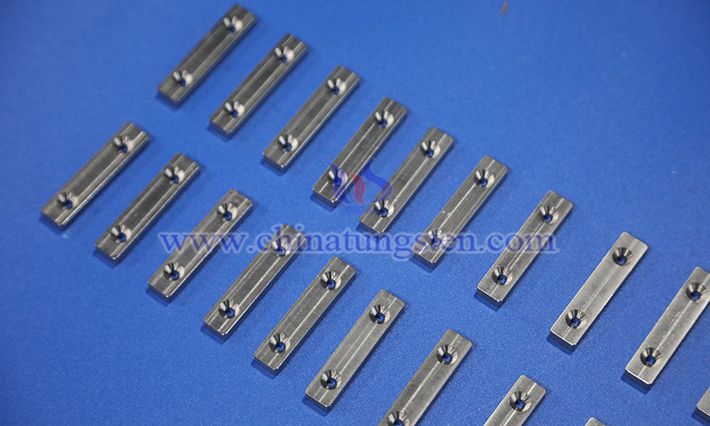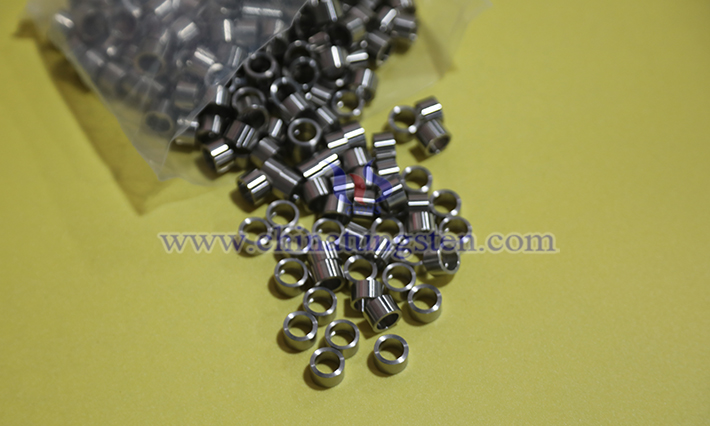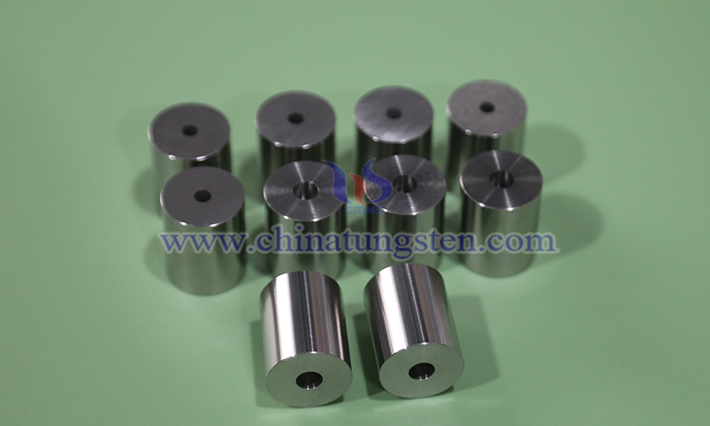Application of High-Density Tungsten Alloy Counterweights in the Shipping Industry
- Details
- Category: Tungsten Information
- Published on Monday, 14 July 2025 14:52
Across the vast and boundless ocean, ships and marine engineering structures are like drifting "islands," constantly facing the challenges of a complex and ever-changing marine environment. The relentless pounding of waves, the fierce blowing of sea winds, the periodic rise and fall of tides, and the continuous impact of ocean currents all place extremely high demands on the stability of marine engineering structures and ships. A slight misstep could cause a ship to lose balance, leading to cargo damage or threats to personnel safety. Similarly, stability issues in marine engineering structures could disrupt operations, result in significant economic losses, and cause severe environmental damage.

Against this backdrop, high-density tungsten alloy counterweights have emerged as a key component in ensuring the stability of marine engineering structures and ships. Acting as a silent "guardian," these counterweights play a vital role in the world of ships and marine engineering, thanks to their unique properties.
1. Understanding High-Density Tungsten Alloy Counterweights
High-density tungsten alloy counterweights are primarily composed of tungsten, with a tungsten content typically ranging from 85% to 99%. These alloys are blended with small amounts of binding metals such as nickel (Ni), copper (Cu), iron (Fe), cobalt (Co), and molybdenum (Mo), and are commonly referred to as high-density tungsten alloys.
Tungsten alloy counterweights possess several remarkable characteristics. One of their most prominent features is their high density, typically ranging from 16.5 to 18.5 g/cm³. This high density allows tungsten alloy counterweights to achieve the same weight with a smaller volume, effectively saving space—an essential advantage for ships and marine engineering structures with compact spatial layouts.
Another significant advantage is their excellent corrosion resistance. In the harsh marine environment, filled with corrosive substances like salt, ordinary materials are prone to corrosion and damage. In contrast, tungsten alloy counterweights can withstand seawater corrosion for extended periods, significantly extending their service life and reducing the frequency and cost of replacement and maintenance.
Furthermore, high-density tungsten alloy counterweights are environmentally friendly compared to lead alloys. They also boast a range of excellent properties, including high tensile strength and hardness, good oxidation resistance, heat resistance, and a low coefficient of thermal expansion. These qualities provide a solid foundation for their widespread application in marine engineering and shipping.

2. Applications of Tungsten Alloy Counterweights in the Shipping Industry
Ships come in a wide variety of types, from recreational yachts and sailboats to specialized submarines. Their designs, purposes, and operating environments differ significantly, leading to perse requirements for counterweights.
For yachts, speed and comfort are critical considerations. During high-speed navigation, yachts are susceptible to jolting and swaying due to wind and waves, which can reduce passenger comfort and compromise navigation safety. Tungsten alloy counterweights can be tailored to the specific conditions of a yacht, adjusting weight distribution to maintain stability during high-speed travel, reduce jolting, and provide a more comfortable sailing experience for passengers.

Sailboats, which primarily rely on wind power for propulsion, depend heavily on stability for safe navigation. Under varying wind conditions, sailboats need to adjust their center of gravity promptly to ensure that the sails effectively capture wind, enabling stable navigation. High-density tungsten alloy counterweights can be flexibly adjusted in weight and position based on the sailboat’s hull type, load conditions, and wind conditions during navigation. This helps sailboats maintain balance in complex and variable marine environments, enhancing both safety and maneuverability.
Submarines, as specialized vessels capable of underwater navigation, have even more stringent requirements for balance and stability. Underwater, submarines must withstand significant water pressure while maintaining excellent maneuverability to accomplish various tasks. Leveraging their high density and strength, tungsten alloy counterweights effectively increase a submarine’s weight, helping it maintain a stable posture underwater. By adjusting the position and weight of the counterweights, submarines can achieve ping, surfacing, and smooth navigation underwater.
- Chinatungsten Online: www.chinatungsten.com
- CTIA GROUP LTD: en.ctia.group
- Tungsten News & Price: www.ctia.com.cn
- Molybdenum News & Price: news.molybdenum.com.cn
- Tel.: 86 592 5129696; Email: sales@chinatungsten.com



 sales@chinatungsten.com
sales@chinatungsten.com